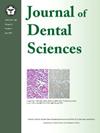The investigation of effects, signal pathways, and applications of high glucose on dental pulp stem cells
IF 3.1
3区 医学
Q1 DENTISTRY, ORAL SURGERY & MEDICINE
引用次数: 0
Abstract
Background/purpose
Dental pulp stem cells (DPSCs) are among the most widely used dental-derived mesenchymal stem cells (MSCs), and their applications have involved various regions. The glucose metabolism plays a key role in cell function and the current literature presents conflicting evidence regarding the influence of glucose on MSCs' properties. This study evaluated the impact of high glucose (HG) on DPSCs.
Materials and methods
DPSCs were stimulated with indicated concentrations of glucose. Cell viability was assessed using a cell counting kit, while apoptosis and autophagy were analyzed via western blot. MSCs immunophenotypic properties were determined by flow cytometry. Osteogenic, adipogenic, and neurogenic differentiation potential were evaluated using western blot, Alizarin red staining, oil red-O staining, and morphological analysis.
Results
HG exposure led to a significant decrease in cell viability, with increased apoptosis and autophagy, as indicated by increased levels of cleaved caspase-3, cleaved poly (ADP-ribose) polymerase (PARP), and an elevated microtubule-associated protein 1 light chain 3 beta (LC3B)-II/LC3B-I ratio. However, the immunophenotypic characteristics of DPSCs remained unchanged. DPSCs also demonstrated enhanced osteogenic, adipogenic, and neurogenic differentiation potential by expressing Alizarin red and oil red-O staining, neural-like cell morphology, and several differentiation-related proteins after HG culture stimulation.
Conclusion
The present study demonstrated that while HG slightly impairs DPSC viability, it promotes osteogenic, adipogenic, and neurogenic differentiation. Providing valuable insights into the mechanisms by which HG influences various differentiation pathways in DPSCs and establishes a foundation for potential clinical applications of DPSCs in regenerative medicine for diabetic patients.
高糖对牙髓干细胞的作用、信号通路及应用研究
背景/目的牙髓干细胞(dental pulp stem cells, DPSCs)是应用最广泛的牙源性间充质干细胞(mesenchymal stem cells, MSCs)之一,其应用涉及多个领域。葡萄糖代谢在细胞功能中起着关键作用,关于葡萄糖对间充质干细胞性质的影响,目前的文献给出了相互矛盾的证据。本研究评估了高糖(HG)对DPSCs的影响。材料和方法用指定浓度的葡萄糖刺激sdpsc。细胞计数试剂盒检测细胞活力,western blot检测细胞凋亡和自噬。流式细胞术检测MSCs的免疫表型。采用western blot、茜素红染色、油红- o染色和形态学分析评估成骨、脂肪和神经分化潜能。结果shg暴露导致细胞活力显著降低,凋亡和自噬增加,如裂解caspase-3、裂解聚(adp -核糖)聚合酶(PARP)水平升高,微管相关蛋白1轻链3 β (LC3B)-II/LC3B- i比值升高。然而,DPSCs的免疫表型特征保持不变。通过表达茜素红和油红- o染色、神经样细胞形态和HG培养刺激后的几种分化相关蛋白,DPSCs也表现出增强的成骨、成脂和神经分化潜力。结论HG虽能轻微损害DPSC的活力,但能促进成骨、脂肪和神经源性分化。为HG影响DPSCs各种分化途径的机制提供有价值的见解,为DPSCs在糖尿病患者再生医学中的潜在临床应用奠定基础。
本文章由计算机程序翻译,如有差异,请以英文原文为准。
求助全文
约1分钟内获得全文
求助全文
来源期刊

Journal of Dental Sciences
医学-牙科与口腔外科
CiteScore
5.10
自引率
14.30%
发文量
348
审稿时长
6 days
期刊介绍:
he Journal of Dental Sciences (JDS), published quarterly, is the official and open access publication of the Association for Dental Sciences of the Republic of China (ADS-ROC). The precedent journal of the JDS is the Chinese Dental Journal (CDJ) which had already been covered by MEDLINE in 1988. As the CDJ continued to prove its importance in the region, the ADS-ROC decided to move to the international community by publishing an English journal. Hence, the birth of the JDS in 2006. The JDS is indexed in the SCI Expanded since 2008. It is also indexed in Scopus, and EMCare, ScienceDirect, SIIC Data Bases.
The topics covered by the JDS include all fields of basic and clinical dentistry. Some manuscripts focusing on the study of certain endemic diseases such as dental caries and periodontal diseases in particular regions of any country as well as oral pre-cancers, oral cancers, and oral submucous fibrosis related to betel nut chewing habit are also considered for publication. Besides, the JDS also publishes articles about the efficacy of a new treatment modality on oral verrucous hyperplasia or early oral squamous cell carcinoma.
 求助内容:
求助内容: 应助结果提醒方式:
应助结果提醒方式:


